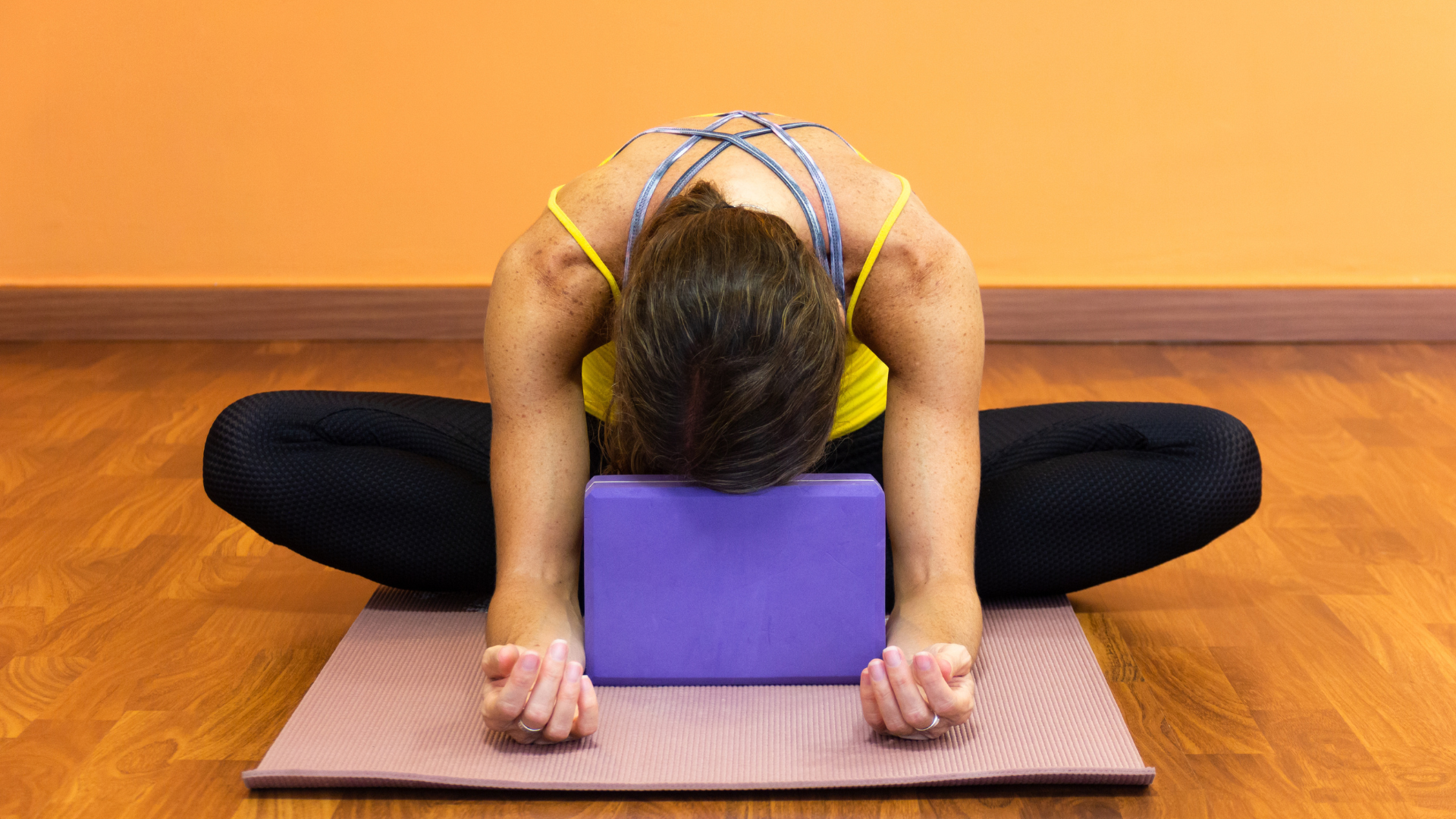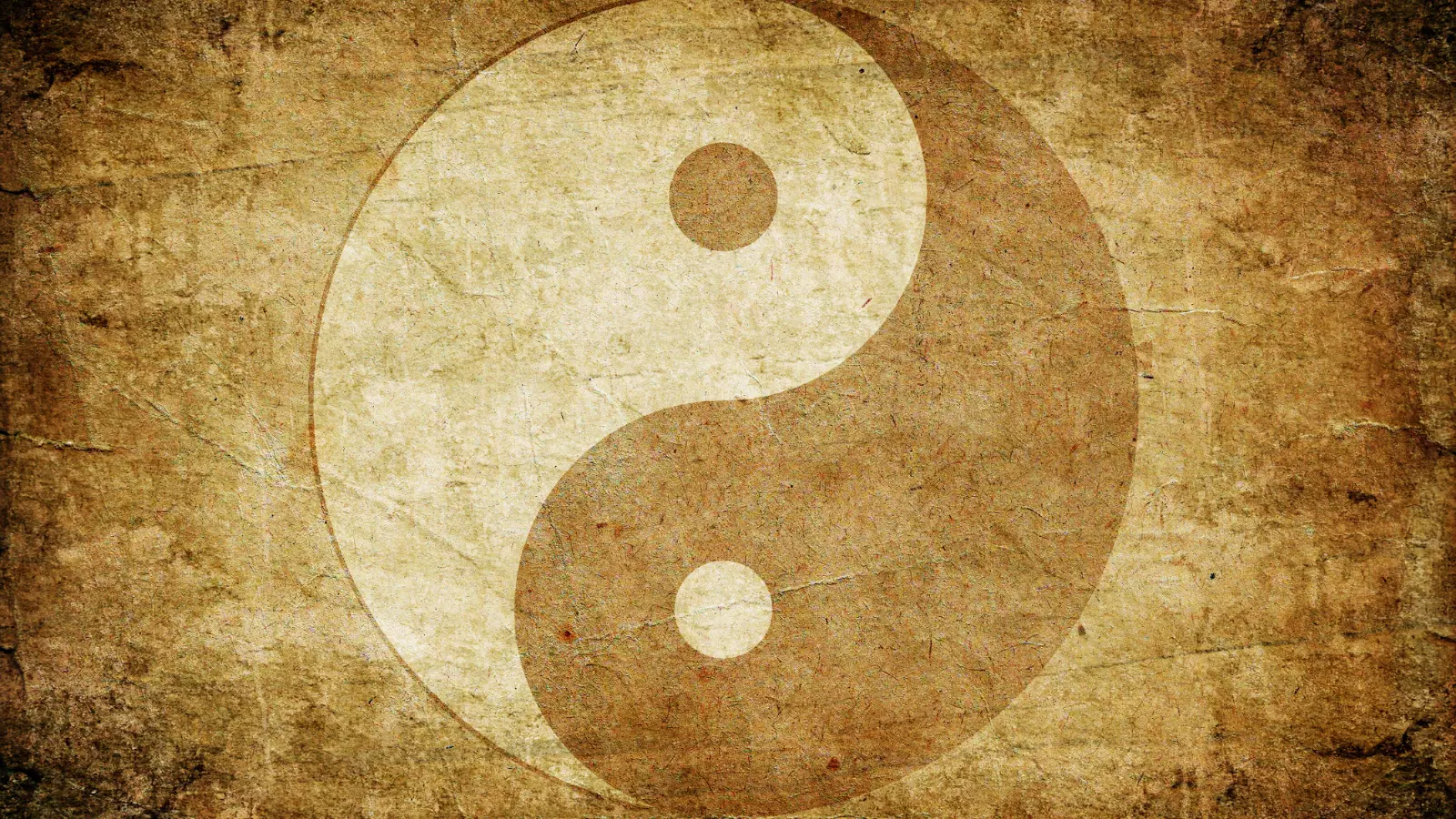Has Evil Qi Settled in Your Joints? Yin Yoga Can Help

Article At A Glance
Yin Yoga gently stimulates the major joints of the body to support an internal environment of flowing Qi, or vital energy. Read on to learn how the practice of Yin Yoga can help when “evil Qi” has taken over your joints.
How can Yin Yoga help when evil Qi has settled in your joints? On January 2nd, 2001, I sat alongside a hundred strangers on a cushion in the drafty old meditation hall of the Insight Meditation Society (IMS) in Barre, Massachusetts. We were on a nine-day silent meditation retreat, and we were meant to be observing our breath, observing whatever arose beyond the breath, all the while practicing the art of nonjudgmentally returning to the breath—Mindfulness 101 stuff.
Except I was having a hell of a time. I couldn’t focus on my breath at all because I was acutely aware of a blowtorch-like pain in my left knee, a numbing ache in my left hip, and a stabbing sensation on the inside of my left scapula.
As unpleasant as these pains were, they were only the beginning of my problems. My emotional chaos of despair, frustration, and confusion was far more upsetting.
Prior to this retreat, I had been an avid practitioner of Iyengar Yoga. I loved my Iyengar practice dearly and devotedly practiced two to three hours a day, including a pilgrimage stint of practice with the Iyengars in Pune, India. For me, Iyengar Yoga was yoga.
In hindsight, I can see my cognitive dissonance and feeling of betrayal. Here I had spent a significant amount of my time and life pursuing a yoga practice to ostensibly sit in a meditation posture safely, comfortably, and even peacefully. How was it that I was still experiencing such physical resistance after all this practice?
The Evil Qi in My Joints
At the time, I was studying for a master’s degree in acupuncture, and I had learned about what Chinese Medicine calls “Painful Obstruction Syndrome”: pain, soreness, or numbness of muscles, tendons, and joints.
In Chinese Medicine, Painful Obstruction Syndrome is a diagnostic pattern describing what happens when pathogenic energy, or Evil Qi, accumulates and settles in the joints, disrupting the free flow of energy in the joint and beyond. Think of osteoarthritis that gets worse in the cold. Chinese Medicine would call this “Cold Painful Obstruction Syndrome.” This may sound strange to Western ears, but I can attest to the description. It certainly felt like I creaked to stand and sit, as Evil Qi had lodged in my 28-year-old joints.
But my question remained, why, if I was doing so much yoga, were my joints experiencing so much stagnation of Qi and pain in meditation? The answer, it turns out, wasn’t the fault of Iyengar Yoga, and it wasn’t because I was “tight.”
It was because I had yet to discover two important truths about the human body, both of which I learned when I discovered Yin Yoga.
In Walked Yin Yoga

Just after the agony of my first retreat, a good friend and yoga colleague suggested I look into Yin Yoga, promising it would help me “sit more comfortably in meditation.” She had my attention with that dangling carrot, but as I shared in my article, Seven Common Misconceptions About Yin Yoga, I had some misgivings about Yin Yoga. My first take was that it seemed imprecise and lacking in good alignment. But I was open-minded enough to give it a try. And so, while studying for acupuncture, I would hang out in lots of Yin Yoga poses, flipping through flashcards of channels and acupoints.
After three months of giving Yin Yoga a chance, I went back to Insight Meditation Society for another nine-day silent retreat. I couldn’t believe the proverbial “night-and-day” shift. On the cushion, my body felt like room-temperature butter, softened and comfortably able to sit in meditation.
And that was my moment of conversion. This isn’t to say I abandoned my Iyengar practice. Rather, I folded Yin Yoga into my existing practice, especially as I began learning about Yin Yoga from Paul Grilley, the person largely responsible for, in his words, “reviving, not inventing” this approach to yoga asana.
3 Principles of Yin Yoga
Back in 2001, Paul taught me three very simple but profound things about the human body. I will briefly summarize those three points here:
- All bodies, especially at the skeletal level, are utterly unique. Therefore, every individual student must discover—by themselves or with a teacher’s guidance—the unique form of alignment and variations of alignment to suit their unique bodies. There are no universal rules of alignment other than the meta-rule that all bodies are unique.
- There are two reasons your body stops when it attempts to move in a particular direction. Those reasons are either a) the body is bumping into itself and stopping because of some form of compression, or b) soft tissue tension is restricting your ability to go further, which is often described as feeling “tight.”
- If soft tissue tension is restricting your mobility, Yang Yoga and Yin Yoga are two complementary ways to release tension at the myofascial level (Yang Yoga) and at the dense connective tissue joint level (Yin Yoga).
The Yin-Yang Balance in Your Joints

Those three teachings profoundly influenced my entire practice life from that day on. Immediately, I stopped sitting through hours of knee pain, waiting for my body to “open up.” With a deeper appreciation for my skeleton’s capacities and limitations, I found better versions of postures in both Yin and Yang yoga practices. Overall, my yoga and meditation practice became less like spiritually sanctioned forms of self-harm and more like an incredibly creative form of self-administered bodywork.
Shortly after meeting Paul Grilley, while marinating in a Yin Yoga pose, I came across this passage in Giovanni Maciocia’s Foundations of Chinese Medicine, the seminal text of Traditional Medicine Theory at my school:
“Joints in Chinese Medicine are more than just anatomical entities: they have an important function with regard to the circulation of Qi and Blood, with several implications in pathology. Joints are places where Qi and Blood concentrate or gather … The joints are the places along the channels where Qi enters and exits. As a consequence of this concentration of Qi, the joints are the places where a pathogenic factor easily settles. When a pathogenic factor invades the joint, it alters the balance of Yin-Yang, upsets the circulation of Qi in the channel, and it causes Qi and Blood to stagnate: This causes pain, and in the long run, it gives rise to Painful Obstruction Syndrome.”
Yin Yoga: Elixir for Your Joints
Over the years of practicing and studying both acupuncture and Yin Yoga, I now appreciate the scope of this passage even more. If Evil Qi has settled in the joints and is now disrupting the holistic balance of Yin and Yang, it would make logical sense to implement some sort of “joint-care practice” to maintain and restore the flow of Qi through the joints. Qi Gong and all physical forms of yoga do this to some extent.
But Yin Yoga hones in on the issue of Evil Qi taking up residence in your joints.
Yin Yoga—especially when skillfully paired with mobility and strength—gently stimulates the major joints of the body to support an internal environment of flowing Qi, which feels like an elixir of suppleness.
Also, read...
A Relaxing Yin Yoga Sequence Practiced at the Wall
Lateral Love: A Gentle Yin Yoga Sequence to Lengthen the Side Body
Related courses
Journey to Center: A Yoga Guide to Unlock the Full Potential of Your Core
Yoga for Healthy Hips: Principles for a Safe Practice
Need an Energy Makeover? How Yoga Can Help You Boost Vitality

Josh Summers, acupuncturist, Yin Yoga teacher, and lifelong meditator, shares a passion for the principles of Chinese Medicine, Buddhist meditation, Yin Yoga, and holistic healing. Josh lives in rural Maine with his partner, Terry Cockburn, where they co-lead the River Bird Sangha – an online practice community for Yin Yoga, Qi Gong, and meditation. For a FREE copy of Josh’s ebook The What, Why, and How of Yin Yoga, the podcast Everyday Sublime, or their Yin Yoga School and practice sangha, please visit Josh at www.joshsummers.net.


